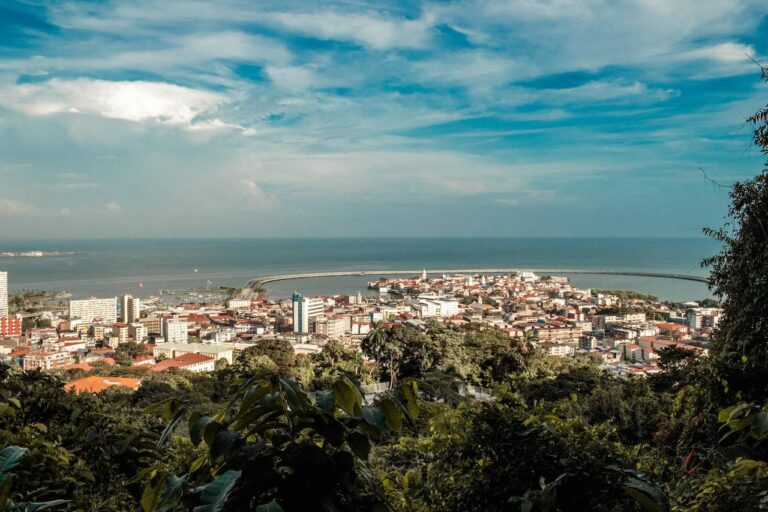Concerns about the effects of climate change are growing. Governments are looking for ways to reduce their carbon footprints and become more sustainable. What will be the first 3 carbon-negative countries in 2023?
Many nations are making significant progress in reducing their global carbon emissions. This is being achieved through policy initiatives, investment strategies, and technological advances.
Read on to find out which countries are expected to be ahead of the pack when it comes to reducing their carbon footprints.
Table of Contents
Bhutan
Bhutan is a beacon of hope in the fight against climate change, having become the world’s first carbon-negative country in 2016. The small landlocked nation has achieved this remarkable feat through its commitment to environmental conservation, sustainable development, and good governance.
Bhutan’s Constitution requires at least 60% of land to be kept under forest cover. The nation has also banned plastic bags and prioritized renewable energy sources such as hydropower. Did you know that hydropower generates over 80% of the country’s electricity and is a significant source of revenue for the government? In addition, Bhutan is investing in sustainable agriculture and composting initiatives to reduce methane emissions.
The country also participates in global projects to offset remaining carbon dioxide emissions, with programs such as Bhutan for Life helping to protect its protected areas. For example, the Bhutan for Life program, launched in 2017, aims to raise $43 million to support the country’s protected areas and conservation efforts.
To ensure the success of its environmental conservation initiatives, Bhutan places great emphasis on educational and awareness-raising programs. Environmental education is included in the nation’s curriculum, while regular campaigns promote sustainable practices among its citizens.
Thanks to these efforts, Bhutan stands as a shining example of how carbon negatively can be achieved by prioritizing environmental measures. It is hoped that other countries will follow its lead in taking firm action to combat climate change.
Suriname
In a world plagued by climate change and global warming, Suriname has committed to reducing its environmental impacts. This bold move is commendable. Through innovative government initiatives, pioneering technological solutions, and passionate grassroots campaigns, Suriname is striving to become carbon negative.
By using renewable energy, preserving its forests, and funding reforestation initiatives, the nation has already achieved notable progress towards this goal. The government of Suriname launched its Carbon Neutrality Plan in 2019. This comprehensive plan aims to reduce greenhouse gas emissions by 30% over a period of 10 years. The plan brings together stakeholders from across sectors to work towards achieving carbon neutrality by 2030.
By using renewable energy and preserving its forests, the nation has already achieved notable progress towards this goal. It has also funded reforestation initiatives. The country has made commitments to increase its energy efficiency through the use of energy-saving technologies such as LED lighting and efficient air conditioning systems.
In addition to its efforts in renewable energy and efficiency, the government of Suriname is also investing heavily in reforestation projects throughout the country. By 2025, the government hopes to have approximately 500,000 hectares of deforested land restored. Reforestation efforts are essential for removing carbon dioxide from the atmosphere and helping combat climate change.
Suriname’s bold and ambitious carbon neutrality plan is a pioneering example of what can be achieved when a country comes together to tackle the global challenge of climate change.
Read also: Carbon neutrality: what is it and how to reach it
Panama
Panama is well on its way to setting an example for the rest of the world in terms of sustainability efforts. The government has committed to reducing emissions and investing in green energy infrastructure, demonstrating its commitment to becoming carbon neutral.
The government of Panama has vowed to reduce its emissions by 40% come 2030, and by 2050 they plan to achieve net-zero emissions. The nation is investing heavily in renewable energy technologies such as wind, solar, hydroelectricity, and biomass. Additionally, it is working to reduce its dependence on fossil fuels.
The government has also implemented eco-friendly initiatives such as reforestation projects and the installation of electric vehicle charging stations across the country. Additionally, they are promoting sustainable agriculture practices, which include crop rotation, reduced pesticide use, and soil enrichment techniques. These efforts will help minimize Panama’s carbon footprint and slow the rate of global warming.
The government plans to invest in green energy infrastructure. This includes high-efficiency insulation, geothermal heating systems, and smart grids to store renewable energy from sources such as solar power. By investing in green energy projects, Panama hopes to become a leader in clean energy production and reduce its carbon emissions.
Read also: From carbon capture, to nuclear, to hydrogen: 10 ways to net zero emissions












